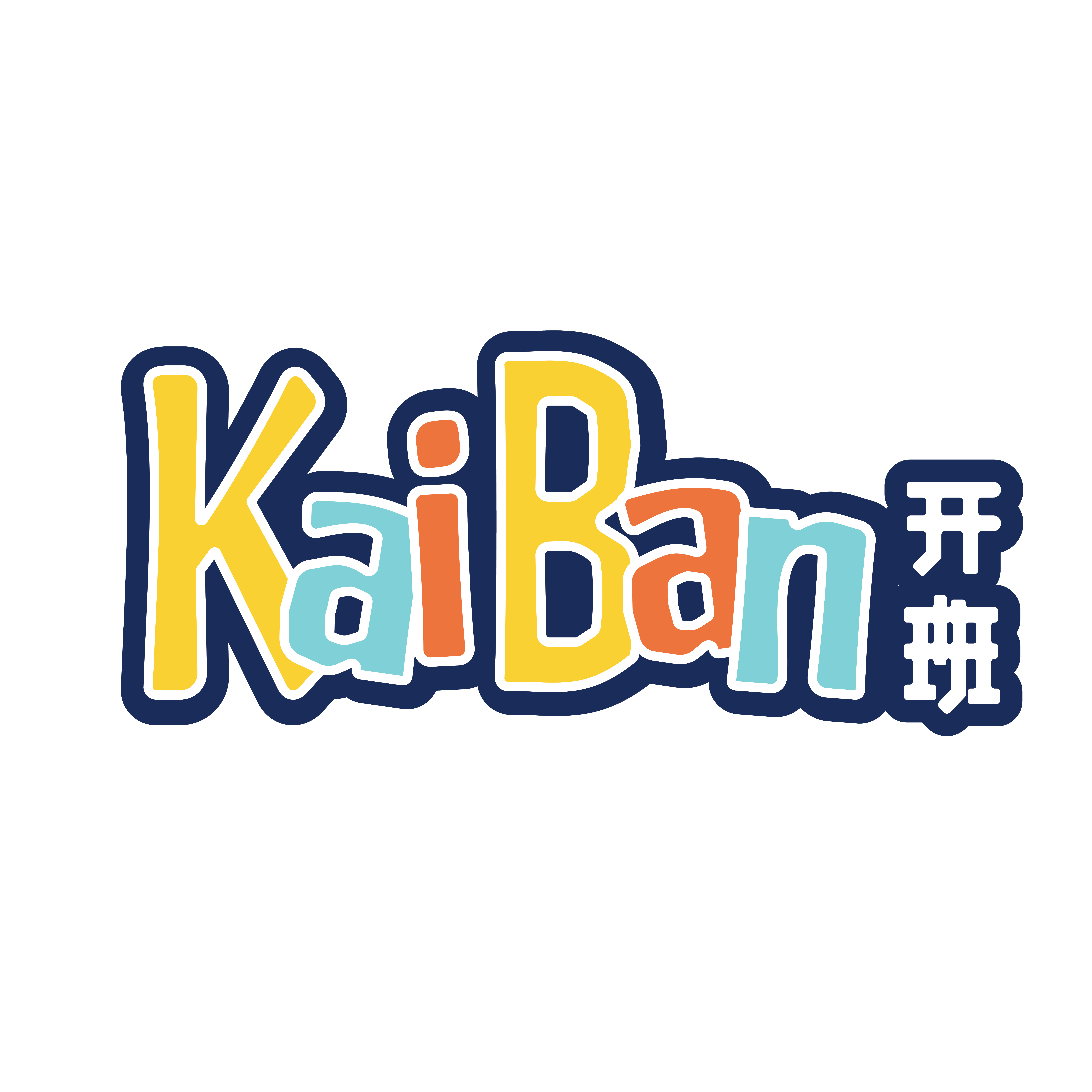A development guide for at-home language learners ranging from newborn to school-age
Language is a fundamental part of human interaction. It empowers children to express their thoughts, feelings, and needs, making it crucial for social interaction and learning. Last month, KaiBan shared some pitfalls to avoid while teaching your language learner their new target language. This month, we want to provide you with insight into when things are going well.
Understanding language development milestones helps parents effectively support their children during this critical growth phase. KiaBan has outlined key stages of language development, what to expect at each stage, and how to encourage language skills.
What Are Language Development Milestones?
Language development milestones are specific skills or behaviors that children typically achieve within a certain age range. These milestones provide insight into how language skills progress over time. While each child is unique and may develop at their own pace, these milestones offer general insight into typical language acquisition.
Stages of Language Development
KaiBan categorizes development in language learning into 6 different stages, so no matter where your budding bilingual household is in your language learning journey, we have insight for you and your little learners. The 6 stages are:
- Pre-linguistic Stage (0-12 Months)
- Holophrastic Stage (12-18 Months)
- Two-word Stage (18-24 Months)
- Early Multi-word Stage (2-3 Years)
- Later Multi-word Stage (3-5 Years)
- Complex Language Use (5+ Years)
1. The Pre-linguistic Stage (0-12 Months)
During the first year, babies begin to communicate primarily through crying, cooing, and babbling. They respond to sounds and voices, turning their heads toward familiar sounds. By six months, they start experimenting with sounds, producing consonant-vowel combinations like “ba” and “da.”
How to Support during the Pre-linguistic Stage:
- Talk to Your Baby: Engage in conversations, even if they can’t respond verbally. Describe your actions and surroundings.
- Read Aloud: Introduce books with bright pictures and simple texts. Reading helps babies connect sounds with words.
- Respond to Babbling: Imitate your baby’s sounds and encourage them to continue making noise.
2. Holophrastic Stage (12-18 Months)
At this stage, toddlers typically begin to use single words—often referred to as “holophrases”—to convey complete ideas. For instance, saying “milk” can mean “I want milk.” Vocabulary may range from 5 to 50 words by the end of this stage.
How to Support during the Holophrastic Stage:
- Label Objects: Name everyday items, animals, and actions to help your youngster build their vocabulary.
- Encourage Gestures: Support their communication with gestures like pointing or nodding to reinforce their understanding.
- Use Repetition: Repeat words and phrases often. This helps your little learner solidify their vocabulary.
3. Two-word Stage (18-24 Months)
Children start combining two words to create simple sentences, such as “want cookie” or “big truck.” This stage marks a significant shift in language development, as they begin to express more complex ideas.
How to Support during the Two-word Stage:
- Model Two-word Combinations: Use simple phrases and encourage them to imitate your examples. For example, say “more juice” when they want more.
- Ask Questions: To encourage longer responses, prompt your youngster with open-ended questions like “What do you see?”.
- Play Together: Engage in interactive play that allows for language use, like building blocks or pretend cooking.
4. Early Multi-word Stage (2-3 Years)
Many young children begin to form longer sentences by this stage–typically consisting of three to four words. Their vocabulary expands to about 200-300 words. Your little learner may also use pronouns and basic grammar, though with frequent errors.
How to Support during the Multi-word Stage:
- Expand Their Sentences: When they say something like “doggy run,” respond with “Yes, the doggy is running fast!” This encourages more complex sentence structures.
- Introduce Storytime: Read longer books and discuss the story to help them understand story structure as well as vocabulary.
- Sing Songs and Rhymes: Incorporating music can make learning fun and help with pronunciation and rhythm.
5. Later Multi-word Stage (3-5 Years)
Your youngster’s sentences might be growing more complex by this stage. They might be incorporating five or more words in one thought. You might also witness them beginning to use a wider range of vocabulary, understanding basic grammar, and even engaging in simple conversations. Their vocabulary can grow to about 1,000 words or more by this point.
How to Support during the Multi-word Stage:
- Encourage Conversations: Give your little learners opportunities to express themselves. Ask about their day and listen actively. Try to use open-ended questions to avoid comfortable responses like “yes” or “no.”
- Introduce New Vocabulary: Use new words in context, and explain their meanings when appropriate. Don’t be afraid to even ask them if they can figure out what you mean by “that word” (whatever new vocabulary word you’ve used).
- Practice Storytelling: Encourage them to tell their own stories, which fosters creativity and language use.
6. Complex Language Use (5+ Years)
During this last stage for early learners, children use complex sentences and can discuss abstract concepts. They start to understand jokes and can follow multi-step directions. Your newly bilingual baby’s vocabulary should continue to expand rapidly, with many children knowing over 2,000 words.
How to Support during the Complex Language Stage:
- Discuss Ideas: Engage in conversations about various topics, encouraging them to think critically and express their opinions.
- Encourage Reading: Provide access to a variety of age-appropriate books, which help expand their vocabulary and comprehension skills.
- Foster Social Skills: Schedule playdates and group activities to enhance their conversational skills and understanding of social cues.
How Can I Recognize Delays in Language Development during At-Home Language Learning?
While children develop at different rates, certain signs may indicate a potential delay or obstacle. These can include:
- Not responding to their name by 12 months
- Not using single words by 15 months
- Not combining two words by 24 months
- Difficulty following simple directions by age 3
- Limited vocabulary or difficulty with speech clarity by age 4
If you notice these signs, it’s important to consult a pediatrician or a speech-language pathologist. Early intervention can make a significant difference in language development. However, as your family explores this, KaiBan still recommends including more simplistic concepts of a new language. This could mean simply offering an alternative “vocabulary word” for the idea or object that you are confident that your youngster grasps comfortably.
What are some Practical Steps for Creating a Language-rich Environment at Home?
To support language at-home development, KaiBan recommends creating an environment rich in language. Here are 5 effective strategies we recommend:
- Engage in Dialogue: Regularly converse with your child, using varied vocabulary and sentence structures.
- Encourage Play: Interactive playtime is always a strong learning tool for new, young learners. It encourages verbal exchanges–helping your little learner express their thoughts and emotions.
- Limit Screen Time: Encourage activities that promote verbal interaction over passive screen consumption. If screen time is a must, try to encourage the use of language-learning software or apps.
- Model Strong Listening Skills: Show your child how to listen actively by responding thoughtfully to what they say. Afterward, share something with them, and encourage them to showcase their listening skills and share their thoughts on the idea you shared.
- Use Everyday Moments: Incorporate language into daily routines—counting objects, naming colors, and describing actions during activities. For parents of young, children preparing to attend school for the first time, this is likely an activity you already tackle. KaiBan encourages you to find ways to incorporate your child’s target language into these efforts.
Understanding language development milestones empowers parents to foster effective communication skills in children. By recognizing the stages of language acquisition and providing appropriate support, you can enhance your little learner’s ability to express themselves and interact with the world around them. Remember, every child develops at their own pace, and creating a nurturing, language-rich environment will help them thrive.
If you would like to receive more information on how to help your child learn a new language at home, sign up for our mailing list!






